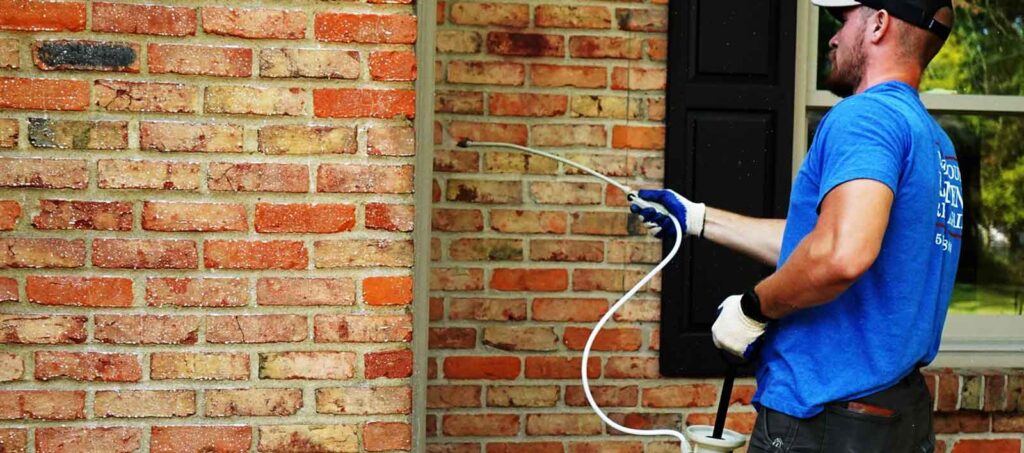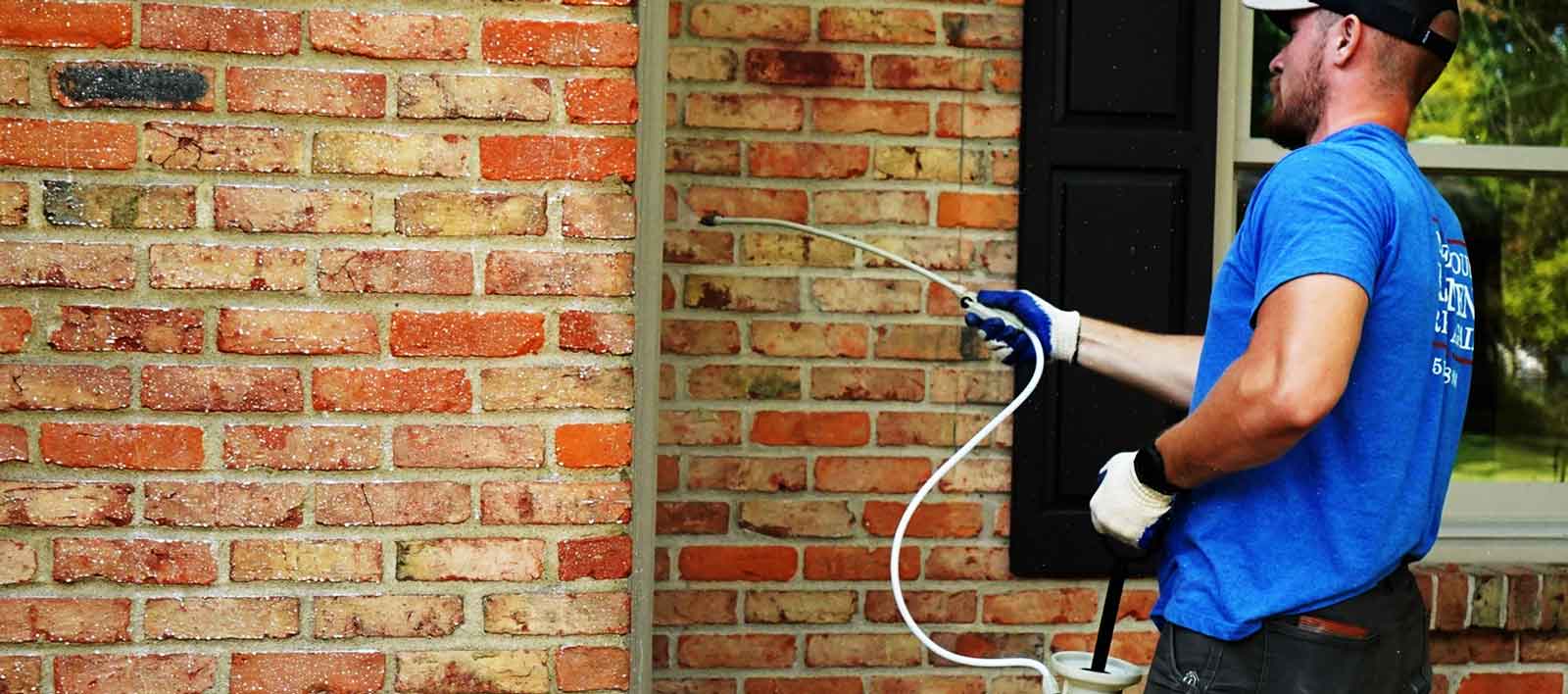
Brick Patio Sealer: Protecting Your Investment and Enhancing Curb Appeal
A brick patio is a beautiful and durable addition to any home, offering a space for relaxation, entertainment, and enjoying the outdoors. However, like any outdoor surface, brick patios are susceptible to weathering, staining, and damage from the elements. Applying a high-quality brick patio sealer is crucial for preserving the beauty and longevity of your patio. This article delves into the importance of using a brick patio sealer, the different types available, how to choose the right one, and the application process.
Why Seal Your Brick Patio?
Unsealed brick is porous, meaning it readily absorbs water, dirt, oil, and other substances. This can lead to a number of problems:
- Staining: Spills from food, drinks, or even fallen leaves can leave unsightly stains that are difficult to remove.
- Weathering: Freeze-thaw cycles can cause water absorbed into the brick to expand and contract, leading to cracking, crumbling, and spalling (surface flaking).
- Efflorescence: This is a white, powdery deposit that appears on the surface of brick, caused by water drawing salts to the surface. While not structurally damaging, it’s unsightly and can be difficult to remove.
- Weed Growth: Weeds can easily take root in the joints between bricks, detracting from the patio’s appearance and potentially damaging the structure.
- Mold and Mildew: Damp conditions can promote the growth of mold and mildew, creating a slippery and unhealthy surface.
A brick patio sealer creates a protective barrier that prevents these problems, extending the life of your patio and keeping it looking its best. By investing in a quality brick patio sealer, you are investing in the long-term value of your property.
Types of Brick Patio Sealers
There are several types of brick patio sealers available, each with its own advantages and disadvantages. Understanding the different types will help you choose the best option for your specific needs and patio:
Penetrating Sealers
Penetrating sealers, also known as impregnating sealers, are designed to soak into the brick and create a water-repellent barrier from within. They typically don’t change the appearance of the brick and allow it to breathe, preventing moisture from becoming trapped inside. These are generally preferred for older brick or brick in areas with heavy freeze-thaw cycles.
- Silane and Siloxane Sealers: These are common types of penetrating sealers that provide excellent water repellency and are resistant to UV degradation.
- Siliconate Sealers: Similar to silane and siloxane sealers, but often used on more porous brick.
Film-Forming Sealers
Film-forming sealers create a protective layer on the surface of the brick. They can provide a glossy or matte finish and may enhance the color of the brick. However, they can also trap moisture inside the brick, which can lead to problems in freeze-thaw climates.
- Acrylic Sealers: These are water-based sealers that are easy to apply and provide a decent level of protection. They are generally less expensive than other types of sealers, but they may not be as durable.
- Polyurethane Sealers: These are more durable than acrylic sealers and provide a glossy finish. They are also more resistant to chemicals and abrasion.
- Epoxy Sealers: These are the most durable type of film-forming sealer, providing excellent resistance to chemicals, abrasion, and staining. However, they are also the most expensive and can be difficult to apply.
Choosing the Right Brick Patio Sealer
Selecting the appropriate brick patio sealer requires careful consideration of several factors:
- Type of Brick: Different types of brick have different porosities. Older, more porous brick may benefit from a penetrating sealer, while newer, less porous brick may be suitable for a film-forming sealer.
- Climate: In areas with harsh winters and freeze-thaw cycles, a penetrating sealer is generally recommended to allow the brick to breathe and prevent moisture from becoming trapped.
- Desired Appearance: Do you want to maintain the natural look of the brick, or do you want to enhance its color or add a glossy finish? Penetrating sealers typically don’t change the appearance of the brick, while film-forming sealers can provide a variety of finishes.
- Level of Protection: Consider the level of protection you need based on the amount of traffic your patio receives and the types of stains it is likely to be exposed to.
- Ease of Application: Some sealers are easier to apply than others. Consider your skill level and the time you are willing to invest in the project.
Always read the manufacturer’s instructions carefully before applying any brick patio sealer. It’s also a good idea to test the sealer on a small, inconspicuous area of the patio to ensure that you are happy with the results.
Preparing Your Brick Patio for Sealing
Proper preparation is essential for ensuring that the brick patio sealer adheres properly and provides the best possible protection.
- Clean the Patio: Remove all dirt, debris, and stains from the patio. Use a stiff brush and a solution of water and mild detergent. For stubborn stains, you may need to use a specialized brick cleaner. A pressure washer can be helpful, but be careful not to damage the brick or joints.
- Repair Any Damage: Repair any cracks or crumbling brick before applying the sealer. Use a mortar mix that is specifically designed for brick patios.
- Remove Efflorescence: If efflorescence is present, remove it with a wire brush and a solution of water and muriatic acid. Be sure to wear gloves and eye protection when working with muriatic acid. Rinse the patio thoroughly after cleaning.
- Allow the Patio to Dry: The patio must be completely dry before applying the sealer. This may take several days, depending on the weather conditions. Use a moisture meter to ensure the brick is dry enough.
Applying Brick Patio Sealer: A Step-by-Step Guide
The application process will vary depending on the type of brick patio sealer you are using. However, here are some general steps to follow:
- Read the Manufacturer’s Instructions: Always read and follow the manufacturer’s instructions carefully.
- Apply the Sealer: Use a brush, roller, or sprayer to apply the sealer evenly to the patio. Avoid applying too much sealer, as this can lead to a sticky or uneven finish.
- Apply a Second Coat (Optional): Some sealers require a second coat for optimal protection. If a second coat is recommended, apply it after the first coat has dried completely.
- Allow the Sealer to Cure: Allow the sealer to cure completely before walking on the patio or placing furniture on it. This may take several days, depending on the type of sealer and the weather conditions.
Maintaining Your Sealed Brick Patio
Once your brick patio is sealed, it’s important to maintain it properly to ensure that the sealer continues to provide protection. Here are some tips:
- Sweep Regularly: Sweep the patio regularly to remove dirt and debris.
- Clean Spills Immediately: Clean up spills as soon as they occur to prevent staining.
- Use Mild Detergent: Use a mild detergent and water to clean the patio as needed. Avoid using harsh chemicals or abrasive cleaners.
- Reapply Sealer: Reapply the brick patio sealer every few years, or as needed, to maintain its protective properties. The frequency of reapplication will depend on the type of sealer and the amount of traffic the patio receives.
The Long-Term Benefits of Using a Brick Patio Sealer
Investing in a brick patio sealer is a smart decision that offers numerous long-term benefits:
- Extended Patio Lifespan: Protects against weathering, staining, and damage, significantly extending the life of your brick patio.
- Enhanced Appearance: Keeps your patio looking clean, vibrant, and well-maintained.
- Increased Property Value: A well-maintained patio enhances your home’s curb appeal and overall value.
- Reduced Maintenance: Makes cleaning and maintenance easier, saving you time and effort in the long run.
- Prevention of Costly Repairs: By preventing damage and deterioration, a brick patio sealer can help you avoid costly repairs down the road.
In conclusion, applying a brick patio sealer is a vital step in protecting your investment and ensuring that your brick patio remains a beautiful and functional outdoor space for years to come. By understanding the different types of sealers, preparing your patio properly, and following the application instructions carefully, you can achieve professional-quality results and enjoy the benefits of a sealed brick patio.
Consider consulting with a professional contractor for brick patio sealer application if you are unsure about any aspect of the process. [See also: Brick Patio Maintenance Tips] [See also: Choosing the Right Outdoor Sealer] [See also: Pressure Washing Your Patio]

